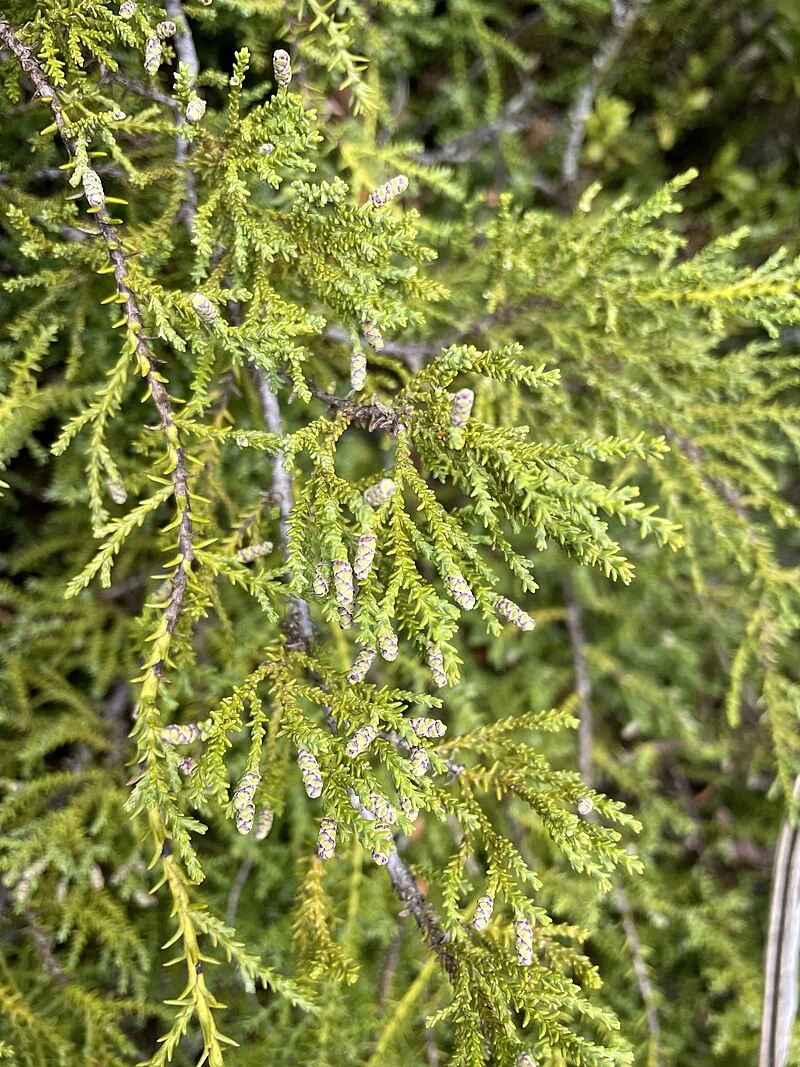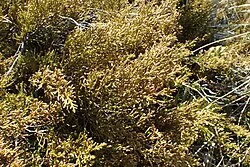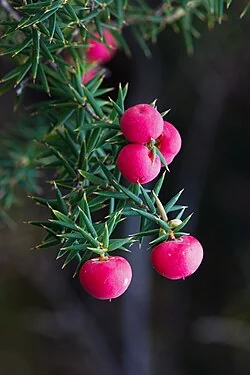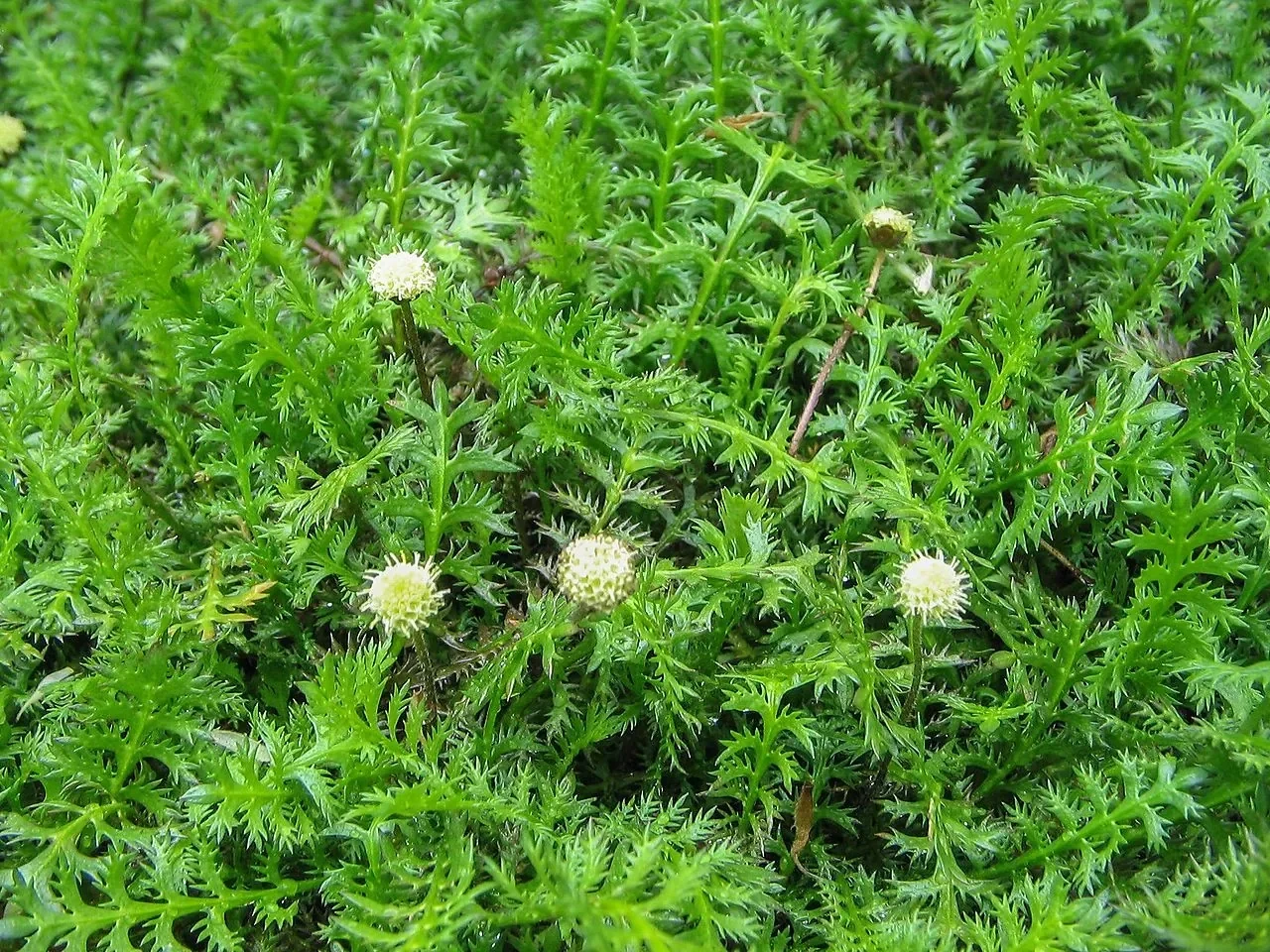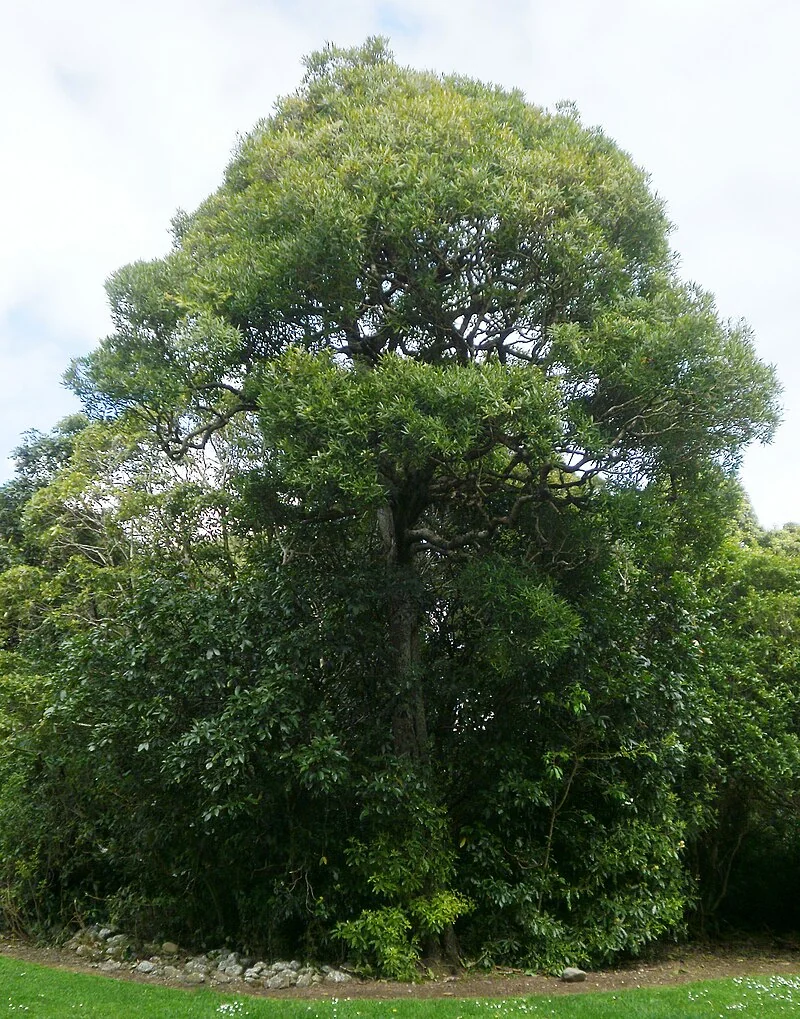
Cook's Scurvy Grass
Lepidium oleraceum
Cook's Scurvy Grass (Lepidium oleraceum) is a native species valued in gardens and restoration for its form and resilience in suitable conditions. Learn more in our native plants guide.
Cook's Scurvy Grass (Lepidium oleraceum) is a historically significant and critically endangered native New Zealand coastal cress. It is a leafy, upright, and branching herb that can grow up to 1 meter tall. Its fleshy, glossy green leaves are packed with Vitamin C, which is why it was famously used by Captain Cook and his crew to successfully combat scurvy during their voyages. This fast-growing biennial or short-lived perennial produces small white flowers in dense racemes. Once widespread on coastal cliffs, scree, and beaches, particularly in areas enriched by seabird and seal colonies, it is now one of New Zealand's most threatened plants, facing extinction due to habitat loss, pests, and diseases.

Plant Description
Botanical Features
Cook's Scurvy Grass (Lepidium oleraceum) is a perennial herb that forms a dense, leafy clump, typically growing up to 1 meter tall and wide. Its stems are much-branched and somewhat woody near the base. The leaves are dark green, fleshy, and somewhat succulent, ranging from narrow-oblanceolate to obovate or elliptic, with deeply and evenly serrated margins. When bruised, all parts of the plant emit a strong, pungent smell. It produces fragrant white flowers, sometimes yellow, with four stamens. These are followed by small, flattened, oval seed pods. This species is now largely restricted to offshore rock stacks and islets, as well as wind-swept headlands, often in friable, well-manured soils or guano deposits associated with seabird nesting sites.
Quick Facts
| Scientific Name | Lepidium oleraceum |
|---|---|
| Common Name | Cook's Scurvy Grass, Nau |
| Family | Brassicaceae |
| Height | Up to 1 m |
| Spread | Up to 1 m |
| Flowers | White, mainly from September to March |
| Water Needs | Moderate, well-drained coastal soil |
| Light | Full sun to partial shade |
| Habitat | Coastal areas with fertile, well-drained soil |
| Conservation Status | Threatened - Nationally Critical |
| Frost Tolerance | Moderate; protect from hard frosts |
| Salt Tolerance | Very high; naturally adapted to coastal conditions |
| Growth Rate | Moderate |
| Lifespan | Perennial |
Climate Best Suited to
Cook-s Scurvy Grass (Lepidium oleraceum) is naturally found in coastal environments throughout New Zealand. It thrives in temperate maritime climates with moderate temperatures, high humidity, and protection from extreme weather. The species prefers areas with consistent moisture but excellent drainage, and benefits from the mild temperatures and salt-laden air typical of coastal environments.
Regional Suitability
| City | Climate Suitability |
|---|---|
| Whangārei | Ideal |
| Auckland | Ideal |
| Hamilton | Ideal |
| Tauranga | Ideal |
| Rotorua | Ideal |
| Gisborne | Ideal |
| New Plymouth | Ideal |
| Napier | Ideal |
| Whanganui | Ideal |
| Palmerston North | Ideal |
| Wellington | Ideal |
| Nelson | Ideal |
| Christchurch | Ideal |
| Dunedin | Ideal |
| Invercargill | Ideal |
Natural Habitat
Typical Environments
Understanding the natural habitat of Cook-s Scurvy Grass (Lepidium oleraceum) is crucial for its conservation and any cultivation attempts. This species has very specific habitat requirements.
- Coastal cliffs, beaches, and offshore islands throughout New Zealand.
- Areas enriched by seabird colonies with high soil fertility.
- Maritime environments with salt spray and stable temperatures.
Plant Conservation
Lepidium oleraceum, commonly known as Cook's scurvy grass, nau, ngau, naunau, or heketara, is a herb endemic to New Zealand and is classified as "Nationally Vulnerable" (NZ TCS). Once widespread, its populations have significantly declined over the last 150 years and are now mostly restricted to offshore rock stacks and islets, such as Mana Island, to protect them from threats. The plant faces numerous threats to its survival: reduced seabird populations (which it depends on for fertile and disturbed soils), browsing by livestock, rodents, and snails, insect herbivores (aphids, leaf miners, diamondback moth, small cabbage white butterfly), diseases (white rust), habitat deterioration due to human activity and coastal development, and historically, over-collecting by botanists. Conservation efforts are underway, including a Coastal Cresses Recovery Plan approved in 1998 by the Department of Conservation (DOC). This plan aims to restore viable and self-sustaining populations of all extant coastal cress species throughout their natural range. The plan also emphasizes the need for increased monitoring of coastal cress populations and addresses unresolved taxonomic issues within the Lepidium species group, which have implications for their conservation status and management.
Growing Requirements
Soil Requirements
This plant demands highly fertile, well-drained soil. It naturally thrives in sites enriched by seabird guano, so it requires a soil rich in nutrients, particularly nitrogen. Amending the soil with well-rotted compost or chicken manure can help replicate these conditions. It will not tolerate waterlogged soil.
Light Requirements
Full sun is essential for healthy growth. Cook-s Scurvy Grass should receive at least six hours of direct sunlight each day. A bright, open position will also help to reduce the risk of fungal diseases.
Water Requirements
Keep the soil consistently moist, but not saturated, especially during the establishment phase and in dry summer months. Good drainage is critical to prevent root rot. It is also reported to benefit from an occasional spray of salt water, which mimics its coastal environment.
Planting Guide
When to Plant
The ideal time to plant Cook-s Scurvy Grass (Lepidium oleraceum) is during spring after the last frost, or in early autumn. These seasons provide mild temperatures and reliable moisture needed for successful establishment. As it is often grown as an annual or biennial, timing is crucial for success.
Site Selection
Choose a site with:
- Full sun exposure for at least 6 hours daily
- Exceptionally well-drained, fertile soil rich in nitrogen
- Protection from strong winds but good air circulation
- Isolation from other brassicas to prevent disease
- Access to specialist conservation nursery stock only
Planting Procedure
- Prepare soil by enriching with high-nitrogen organic fertilizer or compost
- Dig a hole large enough to accommodate the root ball
- Plant at the same depth as it was in its container
- Backfill gently and firm soil around the plant
- Water thoroughly immediately after planting
- Apply light mulch, keeping it clear of the stem
- Space plants 40-50cm apart to allow for growth
Initial Care
Monitor newly planted specimens closely for the first few weeks. Maintain consistent moisture without waterlogging, and watch for early signs of pest or disease issues. This critically endangered species requires exceptional care during establishment.
Ecological Role
Ecosystem Roles
The ecological importance of Cook-s Scurvy Grass (Lepidium oleraceum) within its native coastal ecosystem cannot be overstated. As a critically endangered species, its loss would represent a significant gap in New Zealand's biodiversity.
- Key component of coastal cliff and island ecosystems.
- Important food source for specialized coastal invertebrates.
- Indicator species for healthy seabird colony environments.
Uses and Significance
Garden Uses
- Rare specimen plant for dedicated coastal gardens
- Conservation plantings in appropriate coastal habitats
- Educational gardens demonstrating threatened species
- Historical theme gardens showcasing early exploration
Landscaping Applications
Cook-s Scurvy Grass (Lepidium oleraceum) has very limited landscaping applications due to its critical conservation status. Any cultivation should be primarily for conservation and educational purposes.
- Conservation gardens and botanical collections only.
- Educational displays about threatened species.
- Historical interpretation gardens with conservation focus.
Seasonal Care Calendar
Spring
This is the main growth period for Cook-s Scurvy Grass. Sow fresh seeds and monitor young plants carefully for pests like aphids and slugs. Ensure consistent moisture and apply a liquid fertilizer to support vigorous growth.
- Ideal time for sowing fresh seeds
- Monitor young plants for pests and diseases
- Apply liquid fertilizer for vigorous growth
- Ensure consistent moisture levels
Summer
Flowering is most prolific during summer months. Water regularly during dry spells and maintain vigilant pest monitoring, especially for cabbage white butterflies and signs of white rust disease.
- Peak flowering period occurs
- Water regularly during dry spells
- Monitor for cabbage white butterflies
- Watch for white rust disease symptoms
Autumn
As growth slows, reduce watering frequency. This is an excellent time to collect ripe seeds for the following year's sowing. Remove any plants that are dying back to maintain garden hygiene.
- Collect ripe seeds for propagation
- Reduce watering as growth slows
- Remove dying plants for garden hygiene
- Plan for next season's plantings
Winter
As this plant is often treated as an annual, most will have completed their life cycle. Protect any overwintering plants from severe frost and keep the area clean to reduce pest and disease carryover.
- Protect overwintering plants from frost
- Clean area to reduce pest carryover
- Plan conservation activities
- Prepare for next season
When to Prune and How Much
Cook-s Scurvy Grass (Lepidium oleraceum) requires minimal pruning as it is typically grown as an annual or biennial. Management focuses on maintaining plant health and collecting seeds for conservation.
- Remove dead or damaged foliage to maintain plant health
- Deadhead spent flowers to encourage continued blooming
- Allow some flowers to set seed for collection and conservation
- Remove any diseased plant material immediately
- Trim back dying foliage in autumn
- Clean removal of entire plants at end of growing season
Always use clean, sterilized tools when working with this critically endangered species to prevent disease spread. Handle plants gently as they can be quite delicate.
How to Grow Cook's Scurvy Grass
Cook-s Scurvy Grass is a nationally critical and historically significant native New Zealand coastal cress. Its fleshy, glossy green leaves, packed with Vitamin C, were famously used by Captain Cook to combat scurvy. This fast-growing biennial or short-lived perennial is now one of New Zealand's most threatened plants, making its cultivation primarily a conservation effort. It thrives in coastal environments with highly fertile, well-drained soil and full sun. Understanding its propagation methods is crucial for maintaining genetic diversity and supporting its survival.
From Seed
Propagating Cook-s Scurvy Grass from fresh seed is essential for maintaining genetic diversity and supporting conservation efforts. Collect fresh, ripe seeds from healthy parent plants. Sow seeds immediately in a well-draining seed-raising mix, lightly covering them with fine sand or vermiculite. Maintain consistent moisture (but not waterlogged) and temperatures between 15-20°C for optimal germination. Germination typically occurs within 2-3 weeks. Transplant seedlings when large enough to handle, taking extreme care due to their delicate nature. Due to its critical status, seeds are often sourced from specialized conservation nurseries.
From Cuttings
Semi-hardwood cuttings can be taken as an alternative propagation method, though seed propagation is generally preferred for conservation purposes to maintain genetic diversity. Take semi-hardwood cuttings from healthy parent plants. Remove lower leaves and dip in rooting hormone. Insert into a well-draining propagation mix. Maintain high humidity and consistent moisture. Rooting typically occurs within 3-4 weeks. This method can be useful for rapidly increasing stock of specific genotypes for reintroduction programs, but should be done under expert guidance due to the plant's endangered status.
Pests and Diseases
Cook-s Scurvy Grass (Lepidium oleraceum) is highly susceptible to a range of pests and diseases, which is one of the factors contributing to its critical conservation status. Constant vigilance is required when cultivating this endangered species.
Common Pests
- Aphids: Can cause significant damage to new growth. Control with beneficial insects or organic sprays.
- Cabbage White Butterflies: Caterpillars can devastate plants. Physical barriers or biological controls are recommended.
- Diamondback Moths: Another serious pest that targets brassica family plants.
- Leaf Miners: Create tunnels in leaves, weakening the plant.
- Slugs and Snails: Can cause significant damage, especially to young plants.
Common Diseases
- White Rust (Albugo candida): The most serious disease threat, can be fatal to plants.
- Fungal Diseases: Various fungal infections common to brassica family plants.
- Viral Diseases: Can be transmitted by insect vectors and are difficult to treat.
Due to its critical conservation status, any pest or disease management should prioritize organic and non-harmful methods. Consult with conservation specialists when dealing with issues in cultivated specimens.
Cultural Significance
Lepidium oleraceum, commonly known as Cook's scurvy grass or by its Māori names nau, ngau, naunau, and heketara, holds significant cultural and historical importance, particularly in New Zealand.
Its Primary Cultural Significance Stems from Its Traditional Use as a Food Source and Its Role in Preventing Scurvy:
- Māori Traditional Use: The Māori people traditionally consumed the young leaves of Lepidium oleraceum raw or cooked. The Māori name "nau" is ancient and found in various forms throughout Polynesia, suggesting that many Pacific Island peoples traditionally harvested or cultivated related lepidia as a vegetable.
- Captain Cook's Voyages: The plant gained widespread recognition during Captain James Cook's voyages of exploration in the late 1700s and early 1800s. Cook noted in his journal in 1769 that he collected "Sellery and Scurvy grass" (believed to be Lepidium oleraceum) to help ward off scurvy among his crew. Its high vitamin C content made it valuable in preventing this deficiency disease.
Once widespread in coastal areas of New Zealand, Lepidium oleraceum is now considered nationally vulnerable or endangered due to various threats, including habitat loss, browsing by livestock and pests, and reduced seabird populations, which it relies on for fertile soil.
Bonus Tip
The survival of Cook's Scurvy Grass is intricately linked to the health of seabird populations. The plant thrives on the nutrient-rich soils created by seabird guano, and the birds' nesting activities help to disturb the ground, creating ideal conditions for seed germination. The decline in seabird numbers on the mainland is a major factor in the plant's decline.
